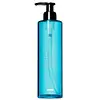What's inside
What's inside
 Key Ingredients
Key Ingredients

No key ingredients
 Benefits
Benefits

 Concerns
Concerns

 Ingredients Side-by-side
Ingredients Side-by-side

Water
Skin ConditioningSodium Cocoyl Glycinate
CleansingCoco-Betaine
CleansingGlycerin
HumectantAcrylates Copolymer
Pentylene Glycol
Skin ConditioningSodium Chloride
MaskingPropylene Glycol
HumectantHydroxyethylpiperazine Ethane Sulfonic Acid
BufferingPhenoxyethanol
PreservativeSodium Hydroxide
BufferingDisodium EDTA
Citrus Aurantium Dulcis Oil
MaskingLimonene
PerfumingAloe Barbadensis Extract
Skin ConditioningChamomilla Recutita Extract
Skin ConditioningCitric Acid
BufferingWater, Sodium Cocoyl Glycinate, Coco-Betaine, Glycerin, Acrylates Copolymer, Pentylene Glycol, Sodium Chloride, Propylene Glycol, Hydroxyethylpiperazine Ethane Sulfonic Acid, Phenoxyethanol, Sodium Hydroxide, Disodium EDTA, Citrus Aurantium Dulcis Oil, Limonene, Aloe Barbadensis Extract, Chamomilla Recutita Extract, Citric Acid
Water
Skin ConditioningGluconolactone
Skin ConditioningPEG-80 Sorbitan Laurate
Triethanolamine
BufferingPolyquaternium-10
Propylene Glycol
HumectantPanthenol
Skin ConditioningGlycine
BufferingSodium Laureth Sulfate
CleansingSodium Laureth-13 Carboxylate
CleansingPEG-150 Distearate
EmulsifyingCocamidopropyl Betaine
CleansingDisodium Cocoamphodiacetate
CleansingSodium Chloride
MaskingPhenoxyethanol
PreservativeMethylparaben
PreservativePropylparaben
PreservativeWater, Gluconolactone, PEG-80 Sorbitan Laurate, Triethanolamine, Polyquaternium-10, Propylene Glycol, Panthenol, Glycine, Sodium Laureth Sulfate, Sodium Laureth-13 Carboxylate, PEG-150 Distearate, Cocamidopropyl Betaine, Disodium Cocoamphodiacetate, Sodium Chloride, Phenoxyethanol, Methylparaben, Propylparaben
 Reviews
Reviews

Ingredients Explained
These ingredients are found in both products.
Ingredients higher up in an ingredient list are typically present in a larger amount.
Phenoxyethanol is a preservative that has germicide, antimicrobial, and aromatic properties. Studies show that phenoxyethanol can prevent microbial growth. By itself, it has a scent that is similar to that of a rose.
It's often used in formulations along with Caprylyl Glycol to preserve the shelf life of products.
Propylene Glycol is an odorless, colorless liquid. As a humectant, it helps skin retain moisture. It also aids in delivering active ingredients.
Another role of this ingredient is preventing a product from melting or freezing. Propylene glycol also adds antimicrobrial properties to a product, elongating product lifespan.
This ingredient is considered an organic alcohol and commonly added into both cosmetics and foods.
Those with sensitive skin or conditions may develop a rash when using this ingredient.
Learn more about Propylene GlycolChances are, you eat sodium chloride every day. Sodium Chloride is also known as table salt.
This ingredient has many purposes in skincare: thickener, emulsifier, and exfoliator.
You'll most likely find this ingredient in cleansers where it is used to create a gel-like texture. As an emulsifier, it also prevents ingredients from separating.
There is much debate on whether this ingredient is comedogenic. The short answer - comedogenic ratings don't tell the whole story. Learn more about comegodenic ratings here.
The concensus about this ingredient causing acne seems to be divided. Research is needed to understand if this ingredient does cause acne.
Scrubs may use salt as the primary exfoliating ingredient.
Learn more about Sodium ChlorideWater. It's the most common cosmetic ingredient of all. You'll usually see it at the top of ingredient lists, meaning that it makes up the largest part of the product.
So why is it so popular? Water most often acts as a solvent - this means that it helps dissolve other ingredients into the formulation.
You'll also recognize water as that liquid we all need to stay alive. If you see this, drink a glass of water. Stay hydrated!
Learn more about Water